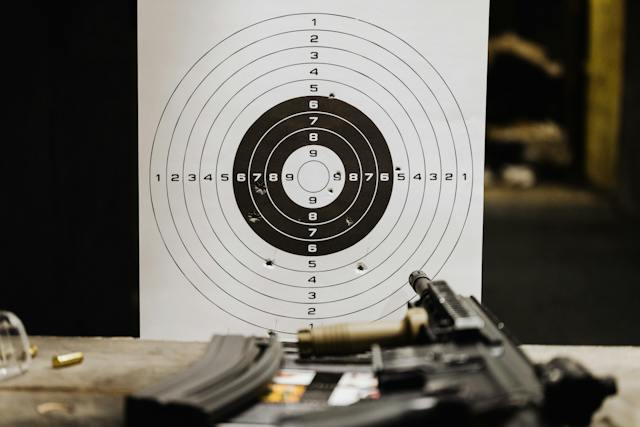Your first shot from a rifle was most likely a 0.22 rimfire round, even if you weren’t aware of it at the time. Rimfire ammunition has an incredibly long history with firearms, and it dates all the way back to the 19th century. It hasn’t changed much since then. Since the design is so simple, it left little room for improvement. Check out Scope Guides to learn more about Scopes and Optics.
The only notable difference between a rimfire round today and back in 1845 is that the modern round will have a gunpowder charge. In contrast, the original round was meant for indoor shooting for fun and didn’t have one.
Nonetheless, rimfire rounds have survived for all this time, even with new kinds of ammunition joining the scene, and are predicted to remain relevant in the coming years. Below, we’ll cover the essential differences between rimfire and centerfire ammo and the advantages and disadvantages of rimfire rounds in general.
The Differences Between Rimfire and Centerfire Ammunition
The main difference between the charges can be gathered just from their names. Centerfire ammo has the primer located in the center of the round, while rimfire functions by the needle hitting the rim or the edge of the round. Why does this matter? Well, with a centerfire round, the gunpowder charge burns more evenly, and the bullet is ejected at a higher speed and more accurately than a rimfire round would.
The rimfire round is also substantially lighter, meaning that it’s more prone to falling victim to crosswinds at longer distances and also drops more due to the slower speed it’s moving at. However, with all of that mentioned, small-game hunters still think of the 0.22 rimfire round as their bread and butter.
There is no competition between the two when it comes to a shorter range and a smaller target. Accompanied by some top 0.22 optics, the rimfire rifle will be just as accurate at a shorter range.
The Main Use of Rimfire Shooting
As mentioned above, there’s no doubt that the rimfire rifle is the logical choice for small game hunting, like rabbits. This is because of the much smaller recoil you will get with a rimfire 0.22 round and the simple cost of ammunition. By rule, rimfire rounds will be a little less expensive, meaning you can get a bit more bang for your buck – literally.
That also makes the rimfire round the more common one that’s used for practice. Someone’s first hunting trip most likely won’t be for big game hunting, so practicing with a small game rifle makes perfect sense. It also serves a great purpose to get familiar with the feel of a rifle and the recoil. Once they have that mastered, it’s much easier to move on to different calibers and centerfire rounds.
How To Improve Your Accuracy
There are a couple of simple tricks and tweaks you can follow to improve your accuracy, but every one of them will require extensive practice. All of the tips and tricks you could use apply for any firearm, and it would be best to either do extensive research or ask an individual with years of experience. They will mostly relate to positioning, pacing, and reading the wind.
However, what’s specific about rimfire shooting is that you have to be aware of your rifle’s possibilities at all times. You need to know how your bullet will travel in different conditions. Of course, all of that will be made easier if you have good optics to make your job just a little easier. The only way you can master this is to practice a lot and practice in different environments.
If you’re lucky enough to have a range near you that’s in the open and allows for practicing long-range shooting, you should hit it up, as they can be quite rare. If that’s not the case, you can always inquire with the Bureau of Land Management to get info about the areas where you could hone your skills.
In Conclusion
There you have it. We hopefully explained the main differences between rimfire and centerfire ammo in a way that anybody can understand and brought to attention the advantages of both and what they are best suited for.
Even though centerfire is an objectively more evolved and improved version of a bullet, rimfire still has its supporters and is still going very strong in the hunting community.
You’ll rarely find a 0.22 rimfire round being kept for self-defense or anything of the sort, but if you get talking with a small game hunter, they’ll assure you that there’s no better ammunition for it, especially if you’re a newbie. In any case, safety should be your number one concern when practicing the art of rimfire accuracy.

